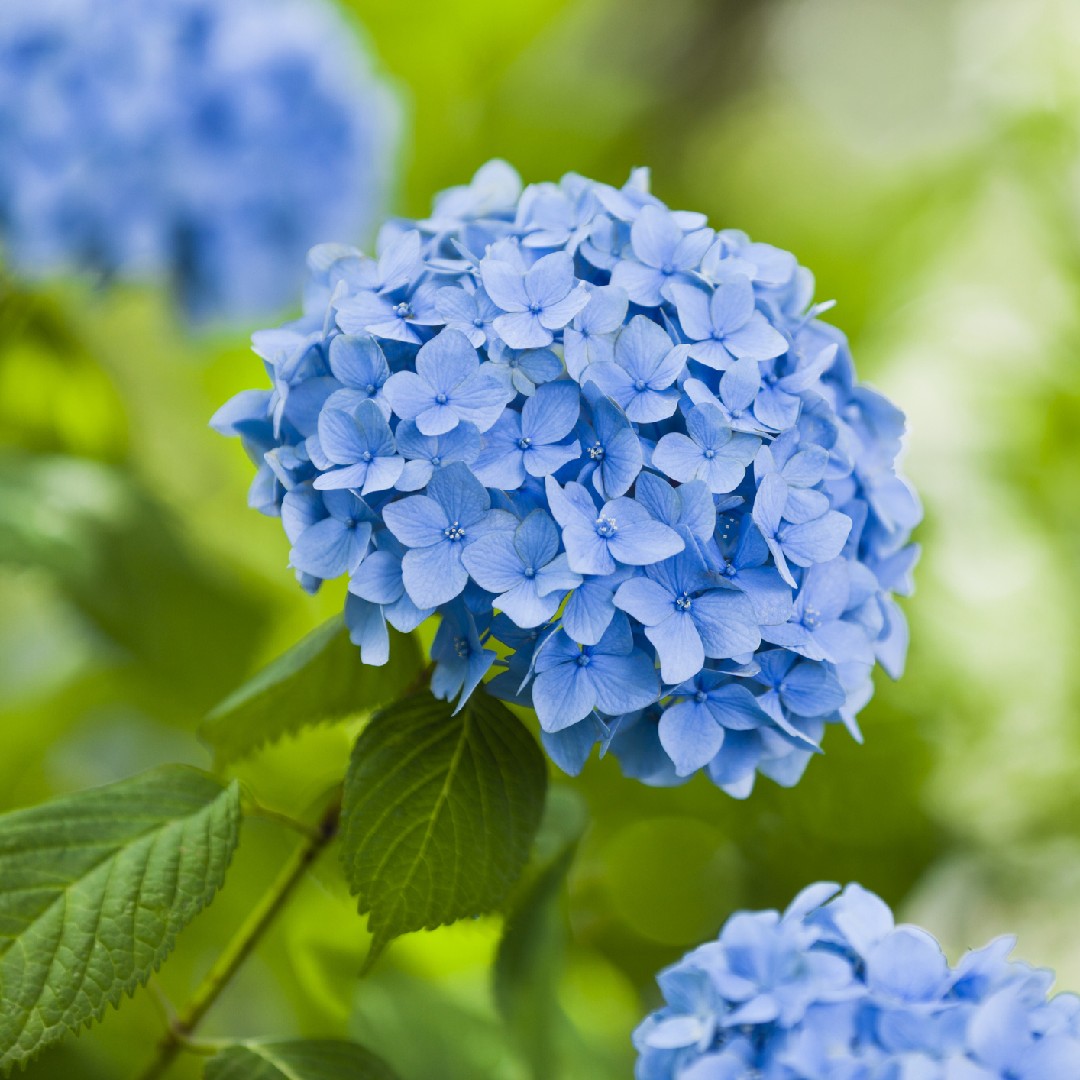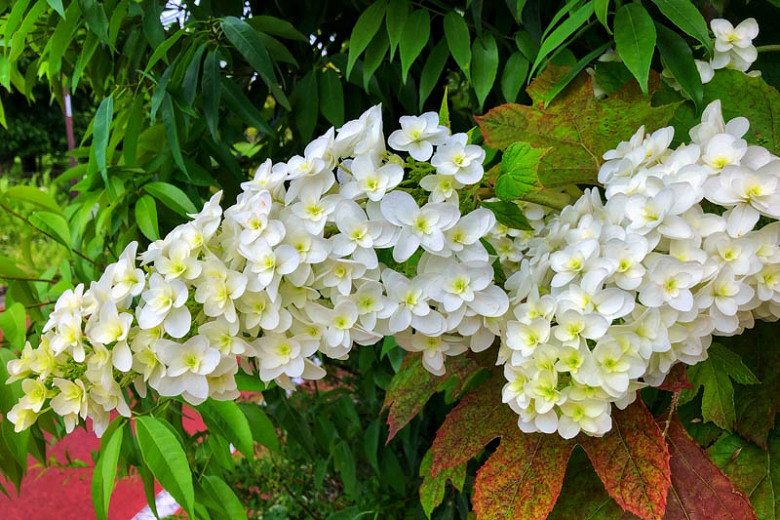The Original Hydrangea: How To Grow This Beautiful Flower
The Original Hydrangea: How to Grow This Beautiful Flower
Hydrangeas are one of the most popular flowering shrubs in the world, and for good reason. They come in a wide variety of colors, sizes, and shapes, and they can be grown in a variety of conditions. Whether you're a beginner gardener or a seasoned pro, growing hydrangeas is a rewarding experience.
In this blog post, we'll discuss everything you need to know about growing hydrangeas, from choosing the right variety to caring for your plants. We'll also provide some tips on how to get the most out of your hydrangeas.
Choosing the Right Variety
There are over 700 different species of hydrangeas, so it can be tough to decide which one is right for you. Here are a few things to keep in mind when choosing a hydrangea variety:
- Sun exposure: Hydrangeas need some sunlight, but they don't do well in hot, direct sun. Most hydrangeas prefer partial shade, but there are some varieties that can tolerate full sun.
- Soil type: Hydrangeas prefer moist, well-drained soil. If your soil is sandy or clay, you'll need to add some compost or peat moss to improve drainage.
- Hardiness zone: Hydrangeas are hardy in USDA zones 3-9. If you live in a colder climate, you'll need to choose a variety that is hardy in your zone.
- Color: Hydrangeas come in a wide variety of colors, including blue, pink, purple, and white. The color of your hydrangeas will depend on the acidity of your soil. In alkaline soil, hydrangeas will bloom blue. In acidic soil, they will bloom pink.
Planting Hydrangeas
Once you've chosen the right variety of hydrangea, it's time to plant it. Here are the steps on how to plant hydrangeas:
- Choose a location that gets partial shade.
- Amend the soil with compost or peat moss to improve drainage.
- Dig a hole that is twice as wide and as deep as the root ball of your hydrangea.
- Place the hydrangea in the hole and backfill with soil.
- Water the hydrangea thoroughly.
Caring for Hydrangeas
Hydrangeas are relatively low-maintenance plants, but they do need some care. Here are some tips on how to care for hydrangeas:
- Water regularly: Hydrangeas need moist soil, so water them regularly, especially during hot, dry weather.
- Fertilize once a year: In the spring, fertilize your hydrangeas with a balanced fertilizer.
- Prune in the spring: Prune your hydrangeas in the spring to remove dead or damaged branches.
- Mulch around your hydrangeas: Mulching will help to keep the soil moist and cool.
Troubleshooting Hydrangea Problems
Hydrangeas are generally healthy plants, but they can be susceptible to a few problems. Here are a few common hydrangea problems and how to solve them:
- Leaf scorch: Leaf scorch is caused by hot, dry weather. To prevent leaf scorch, water your hydrangeas regularly and mulch around them to keep the soil moist.
- Pests: Hydrangeas can be susceptible to a few pests, such as aphids, scale, and spider mites. To control pests, spray your hydrangeas with insecticidal soap or neem oil.
- Diseases: Hydrangeas can be susceptible to a few diseases, such as powdery mildew and leaf spot. To control diseases, remove infected leaves and spray your hydrangeas with a fungicide.
Enjoying Your Hydrangeas
With proper care, your hydrangeas will bloom for many years to come. Enjoy their beautiful flowers and their lush foliage.
The original hydrangea is a beautiful flower that has a long and storied history. It was first cultivated in Japan, and its name comes from the Greek words "hydro" (water) and "angos" (vase), referring to the shape of its blooms. The original hydrangea is known for its vibrant colors, which can range from blue to pink to white. It is also a relatively low-maintenance plant, making it a popular choice for home gardeners.
If you are interested in learning more about the original hydrangea, I encourage you to visit . This website is a comprehensive resource for all things hydrangea, including information on the original hydrangea's history, cultivation, and symbolism. You will also find a wealth of beautiful photos of this stunning flower.
FAQ of original hydrangea
Q: What is an original hydrangea?
A: An original hydrangea is a type of hydrangea that blooms in pink or blue flowers, depending on the pH level of the soil. It is a hardy plant that can tolerate partial shade and blooms in the spring and summer.
Q: What are the different colors of original hydrangeas?
A: Original hydrangeas can bloom in a variety of colors, including pink, blue, purple, and white. The color of the flowers is determined by the pH level of the soil. In acidic soil, the flowers will be pink, while in alkaline soil, the flowers will be blue.
Q: How do I care for an original hydrangea?
A: Original hydrangeas are relatively easy to care for. They prefer partial shade and moist, well-drained soil. They should be watered regularly, especially during the hot summer months. In the fall, the flowers should be trimmed back to encourage new growth in the spring.
Q: What are some common problems with original hydrangeas?
A: Some common problems with original hydrangeas include leaf spot, powdery mildew, and aphids. Leaf spot is a fungal disease that causes brown spots on the leaves. Powdery mildew is a fungal disease that causes a white powdery coating on the leaves. Aphids are small insects that suck the sap from the leaves.
Q: How can I prevent problems with my original hydrangea?
A: To prevent problems with your original hydrangea, you can:
- Plant it in a location with partial shade.
- Water it regularly, especially during the hot summer months.
- Fertilize it in the spring and fall.
- Prune it back in the fall.
- Inspect the plant regularly for signs of pests or diseases.
Image of original hydrangea
5 different images of "original hydrangea" from Pinterest.
- Hydrangea macrophylla
 This is the most common type of hydrangea, and it is known for its large, showy flowers. The color of the flowers can vary depending on the pH of the soil, with pink flowers in acidic soil and blue flowers in alkaline soil.
This is the most common type of hydrangea, and it is known for its large, showy flowers. The color of the flowers can vary depending on the pH of the soil, with pink flowers in acidic soil and blue flowers in alkaline soil. - Hydrangea paniculata
 This type of hydrangea has smaller flowers than Hydrangea macrophylla, but they are arranged in large, conical clusters. The flowers can be white, pink, or blue, and they often have a sweet fragrance.
This type of hydrangea has smaller flowers than Hydrangea macrophylla, but they are arranged in large, conical clusters. The flowers can be white, pink, or blue, and they often have a sweet fragrance. - Hydrangea arborescens
 This type of hydrangea is native to North America, and it is known for its white flowers. The flowers are arranged in flat clusters, and they often have a delicate fragrance.
This type of hydrangea is native to North America, and it is known for its white flowers. The flowers are arranged in flat clusters, and they often have a delicate fragrance. - Hydrangea serrata
 This type of hydrangea is native to Japan, and it is known for its small, star-shaped flowers. The flowers can be white, pink, or blue, and they often have a long blooming period.
This type of hydrangea is native to Japan, and it is known for its small, star-shaped flowers. The flowers can be white, pink, or blue, and they often have a long blooming period. - Hydrangea quercifolia
 This type of hydrangea is known for its oak-shaped leaves and its large, panicle-shaped flowers. The flowers can be white, pink, or blue, and they often have a sweet fragrance.
This type of hydrangea is known for its oak-shaped leaves and its large, panicle-shaped flowers. The flowers can be white, pink, or blue, and they often have a sweet fragrance.
Post a Comment for "The Original Hydrangea: How To Grow This Beautiful Flower"